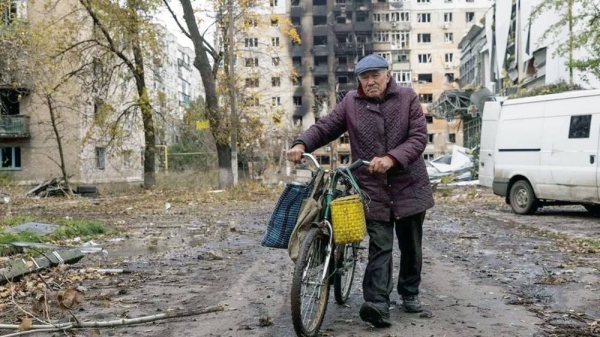
This summer’s record-setting heatwaves and dramatic fires in southern Europe and the American west were stark reminders that the climate crisis has arrived. But as the world warms, there is also a quieter, lesser-known crisis unfolding underfoot. Desertification, long seen primarily as a threat to developing nations, is coming for Europe and North America too, as worsening droughts bake soils already degraded by conventional farming and grazing practices.
In Spain, for example, about a fifth of all land is now at high risk of desertification, as is much of the agricultural land across Italy, Greece, and western North America.
Desertification is a process that turns fertile farms into barren land through the interacting effects of human activity and climate extremes. Soil degradation is the diminishment of a soil’s capacity to support crops and livestock, either because of the erosion of fertile topsoil or the loss of water-holding, nutrient-rich soil organic matter and the life it supports. Semi-arid grasslands like the Sahel and western plains of North America are most vulnerable because loss of drought tolerant native vegetation can trigger rapid soil degradation and loss of agricultural productivity.
A changing climate, however, is not the only cause behind desertification. How we treat the land – how we farm and ranch – matters too. Healthy, life-filled soils better retain the moisture that falls on farmers’ fields.
Desertification is a growing problem. A 2018 report by EU auditors found that an area twice the size of Portugal had fallen into high risk of desertification in the preceding decade, in Europe alone. In recent decades 13 EU states declared themselves affected as the Mediterranean region experienced a significant expansion of drylands – regions with low rainfall. Soil degradation is estimated to cost the EU tens of billions of euros a year, and yet, how farmers treat their soil remains essentially unregulated in regard to soil health on both sides of the Atlantic.
The threat of desertification and land degradation will increase as the climate crisis progresses. A 2018 report found that land degradation already affects the wellbeing of at least 3.2 billion people – more than a third of humanity. Between 1982 and 2015 unsustainable land-use practices already desertified 6% of the world’s drylands. Globally, the area of drylands is projected to increase by up to 23% this century.
Rising temperatures are already predicted to reduce yields of staple crops such as wheat, rice, maize and soya beans, by 3-7 % for each 1°C increase. In Washington state, for example, wheat yields are down this year by about half due to a devastating drought. Madagascar is now facing a climate change-induced famine.
But it’s not just droughts driving the problem. Farming practices that degrade the soil reduce the resilience of crops as worsening conditions affect harvests. Drylands in particular are sensitive to degradation from both tillage and overgrazing. If it continues, soil degradation will further increase the threat to agricultural production in regions that humanity depends on for food.
Looking back through history, it’s clear that desertification and soil degradation are not new problems. Since the arrival of agriculture humanity has degraded as much as a third of the world’s potential farmland. This pattern reflects both a long history of tillage-induced erosion and more recent adoption of modern farming practices that deplete soil organic matter and disrupt soil ecosystems. Unfortunately, we are repeating the problem on a global scale.
Now-conventional farming and ranching practices that degrade the soil leave farmers around the world increasingly reliant on huge amounts of chemical fertilisers and pesticides. Declining soil health due to depletion of soil organic matter and soil life is increasingly recognised as a critical problem.
According to a 2015 UN report we are on track to degrade another third of global farmland over the course of the present century. We’re leaving the land more fragile and our harvests more vulnerable at the same time climate change is creating unprecedented environmental pressures.
To combat and reverse the growing threat of desertification and land degradation we need to both reduce carbon emissions and change the way we farm. We don’t have to relearn the lessons of past societies that degraded their land. But to avoid their fate we need to reorient agriculture around farming and grazing practices that regenerate soil health.
Several years ago, I visited and wrote about farms and ranches around the world that had restored fertility to once-degraded lands. I saw how regenerative farming and grazing based on soil-building practices can reverse soil degradation, rebuild soil health and make farms resilient to extreme weather – while maintaining good harvests. But it requires replacing conventional farming practices dependent on intensive tillage and massive chemical fertiliser use with practices that put soil health first.
In addition to intensive efforts to reduce fossil fuel-derived carbon emissions, we need a sustained global drive to rebuild the health of the world’s agricultural soils. Fortunately, the latter can help with the former. Farming practices that build healthy soil convert carbon dioxide captured from the atmosphere into soil organic matter. While the potential of storing carbon in the soil remains hotly debated, even low-end estimates would help slow climate change.
The soil is the foundation for life on Earth. As we face a century of increasingly volatile weather and a growing population, we need it in its best shape to sustain us. Humanity must get serious about our collective intergenerational responsibility to preserve the health and fertility of our land – wherever we live.
David R Montgomery is professor of geomorphology at the University of Washington, and author of Dirt: The Erosion of Civilizations and Growing a Revolution: Bringing Our Soil Back to Life












